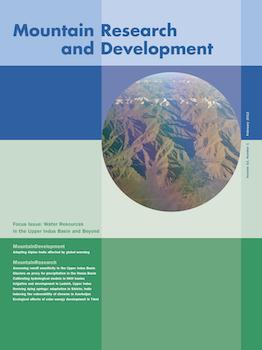BioOne.org will be down briefly for maintenance on 14 May 2025 between 18:00-22:00 Pacific Time US. We apologize for any inconvenience.
Focus Issue: Water Resources in the Upper Indus Basin and Beyond
MountainMedia (5)
MountainResearch (7)
Articles (1)
Editorial (1)
MountainPlatform (1)

No abstract available
No abstract available
No abstract available
No abstract available
No abstract available
No abstract available
No abstract available
